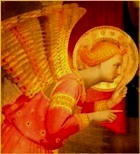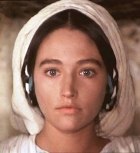Magdalene
Jesus is risen!
Questions for Bible study groups
- What did Mary Magdalene see?
- What did Jesus say and do?
- Why is Mary Magdalene called ‘apostle to the apostles’?
In brief: Mary Magdalene, weeping at the empty tomb, sees two angels standing guard. Grief-stricken and disoriented, she mistakes Jesus for a worker in the garden. Jesus gently corrects her, telling her to go to the disciples and give them the Good News: he is risen, and will ascend to his Father.
Mary Magdalene and the angels
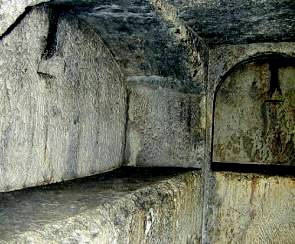
Underground stone tombs from the Tombs of the Kings in Jerusalem. Notice the stone slabs which held the bodies of the dead.
Mary Magdalene was outside the tomb in which Jesus had been placed immediately after he died. She had seen his body placed there, but when she and the other women returned with spices to anoint his dead body, it was missing. All of the women were distraught, but perhaps Mary especially.
When she leaned down to peer through the entrance of the tomb, she saw two ‘angels’ – though what exactly is meant by ‘angels’ is open to debate (see The Women at the Tomb).
‘Why are you weeping?’ they asked. It seemed rather an odd thing to ask in the present situation – the reason was obvious, but of course these words are God’s, and they had a special purpose. They were pushing Mary towards a greater truth than the fact that Jesus’ body was missing.
What seemed like a gentle reproof was really a subtle hint that happiness, not sorrow, should be our response to the empty tomb.
Read the blue Gospel text at bottom of page
Jesus speaks to Mary Magdalene
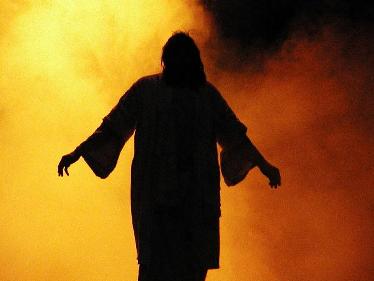 But Mary was submerged in grief. She had fallen into a bent-over position and her eyes were blurred with tears. When she heard a male voice she did not look at the man but assumed it was a worker in the garden surrounding the tombs. Here, she thought, might be someone who knew something.
But Mary was submerged in grief. She had fallen into a bent-over position and her eyes were blurred with tears. When she heard a male voice she did not look at the man but assumed it was a worker in the garden surrounding the tombs. Here, she thought, might be someone who knew something.
She blurted out a question, but when he answered she did not recognise the voice of Jesus. Only when he gently said her name ‘Mary’ did she recognise who it was standing there beside her.
She was immediately overcome with emotion, and grasped hold of him, calling him ‘rabboni’, a Hebrew word meaning ‘teacher’.
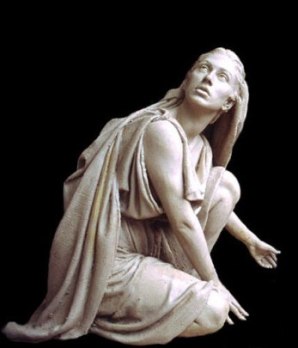 Why Hebrew, an ancient language, and not Aramaic which was the ordinary everyday language of Jews at that time? There is a certain formality in her use of this word. It must have been the word she and the other disciples called him by in the years before his death.
Why Hebrew, an ancient language, and not Aramaic which was the ordinary everyday language of Jews at that time? There is a certain formality in her use of this word. It must have been the word she and the other disciples called him by in the years before his death.
This formality puts paid to the ridiculous notion that she and Jesus were at one time lovers (for the reasons why this could not have happened, see Did Jesus Marry Mary Magdalene?)
Jesus gently disengaged himself from Mary’s grasp. The words he spoke are often translated as ‘Do not touch me’, but a better translation is ‘Do not continue to grasp hold of me’. She must begin to let go, to stop clinging to his physical self. From now on, there would be a different relationship between Jesus and his disciples
Read the green Gospel text at bottom of page
Magdalene, apostle to the apostles
![]() Mary is venerated in the Eastern Orthodox churches as ‘Apostle to the Apostles’, because at this point in John’s gospel she is commissioned to ‘go and tell’ the male disciples the news that Jesus was risen from the dead (‘go and tell’ is apostellein in Greek). For more on this, see Mary Magdalene’s Story.
Mary is venerated in the Eastern Orthodox churches as ‘Apostle to the Apostles’, because at this point in John’s gospel she is commissioned to ‘go and tell’ the male disciples the news that Jesus was risen from the dead (‘go and tell’ is apostellein in Greek). For more on this, see Mary Magdalene’s Story.
What was she to tell? That Jesus would ascend (notice that it is not ‘return’) to his Father. This ‘ascending’ will be a continuing process, not something done in a moment.
Jesus also made a distinction between his relationship with his Father, and the disciples’. He did not say ‘to our Father’. He says ‘my’ and ‘your’ Father, implying that the sonship he has with God is different to the sonship the disciples, the other children of God, have.
Mary’s initial message when she returned to the disciples was that she had seen Jesus with her own eyes. This for her was the most astounding information – as it would be to us. Then she went on to tell them the words Jesus had sent to them.
Read the red Gospel text at bottom of page
Return to top
What the Gospels say
1. Mary Magdalene and the angels at the tomb. Read the blue text
2. Jesus speaks to Mary Magdalene. Read the green text
3. Mary Magdalene, first apostle. Read the red text
John 20:11-18
11 But Mary stood weeping outside the tomb, and as she wept she stooped to look into the tomb;
12 and she saw two angels in white, sitting where the body of Jesus had lain, one at the head and one at the feet. 13 They said to her, “Woman, why are you weeping?” She said to them, “Because they have taken away my Lord, and I do not know where they have laid him.”
14 Saying this, she turned round and saw Jesus standing, but she did not know that it was Jesus. 15 Jesus said to her, “Woman, why are you weeping? Whom do you seek?” Supposing him to be the gardener, she said to him, “Sir, if you have carried him away, tell me where you have laid him, and I will take him away.” 16 Jesus said to her, “Mary.” She turned and said to him in Hebrew, “Rabboni!” (which means Teacher). 17 Jesus said to her, “Do not hold me, for I have not yet ascended to the Father
but go to my brothers and say to them, I am ascending to my Father and your Father, to my God and your God.” 18 Mary Magdalene went and said to the disciples, “I have seen the Lord”; and she told them that he had said these things to her.
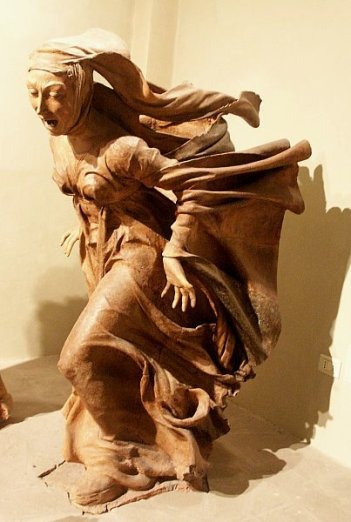
Find Out More



